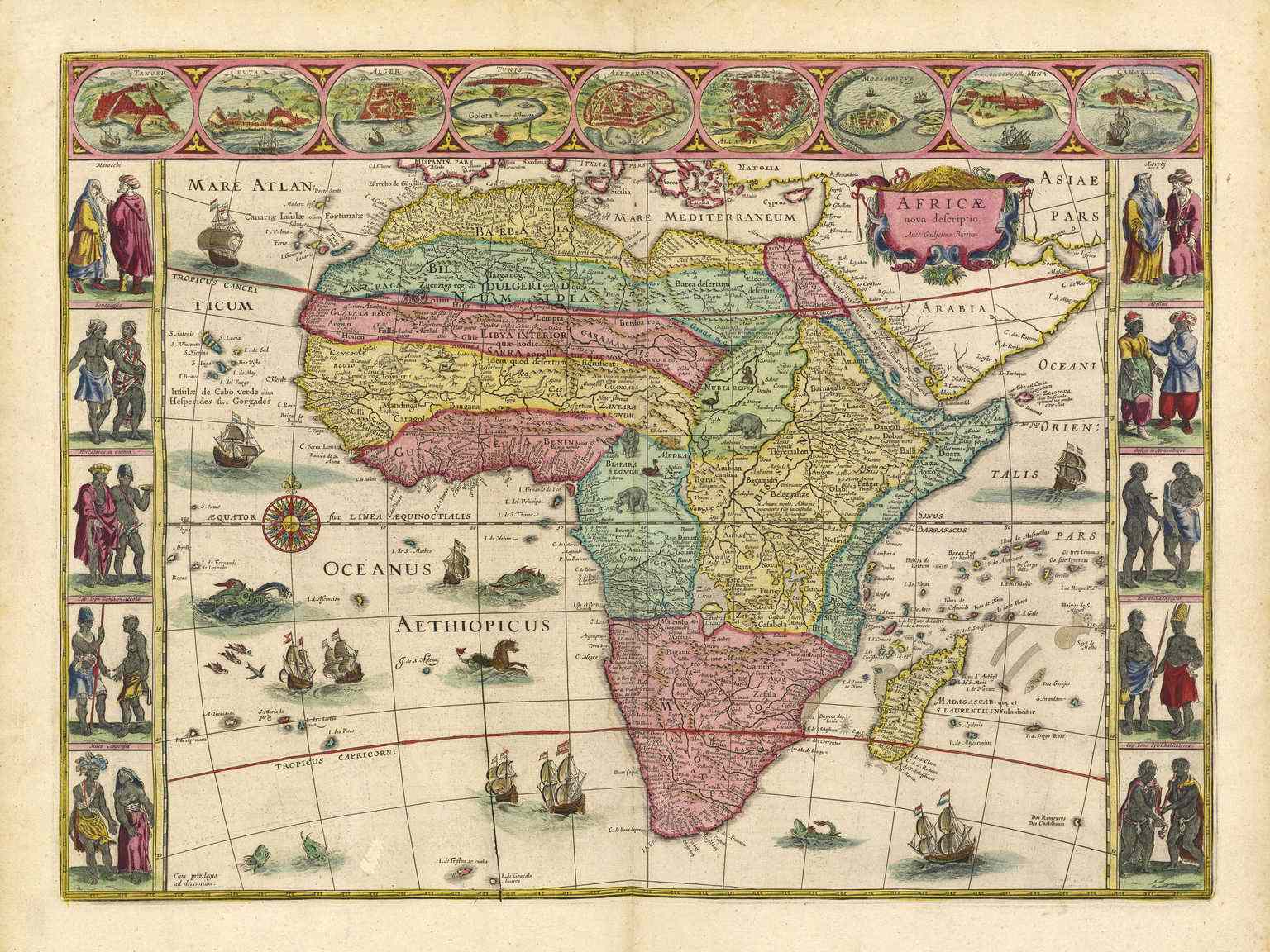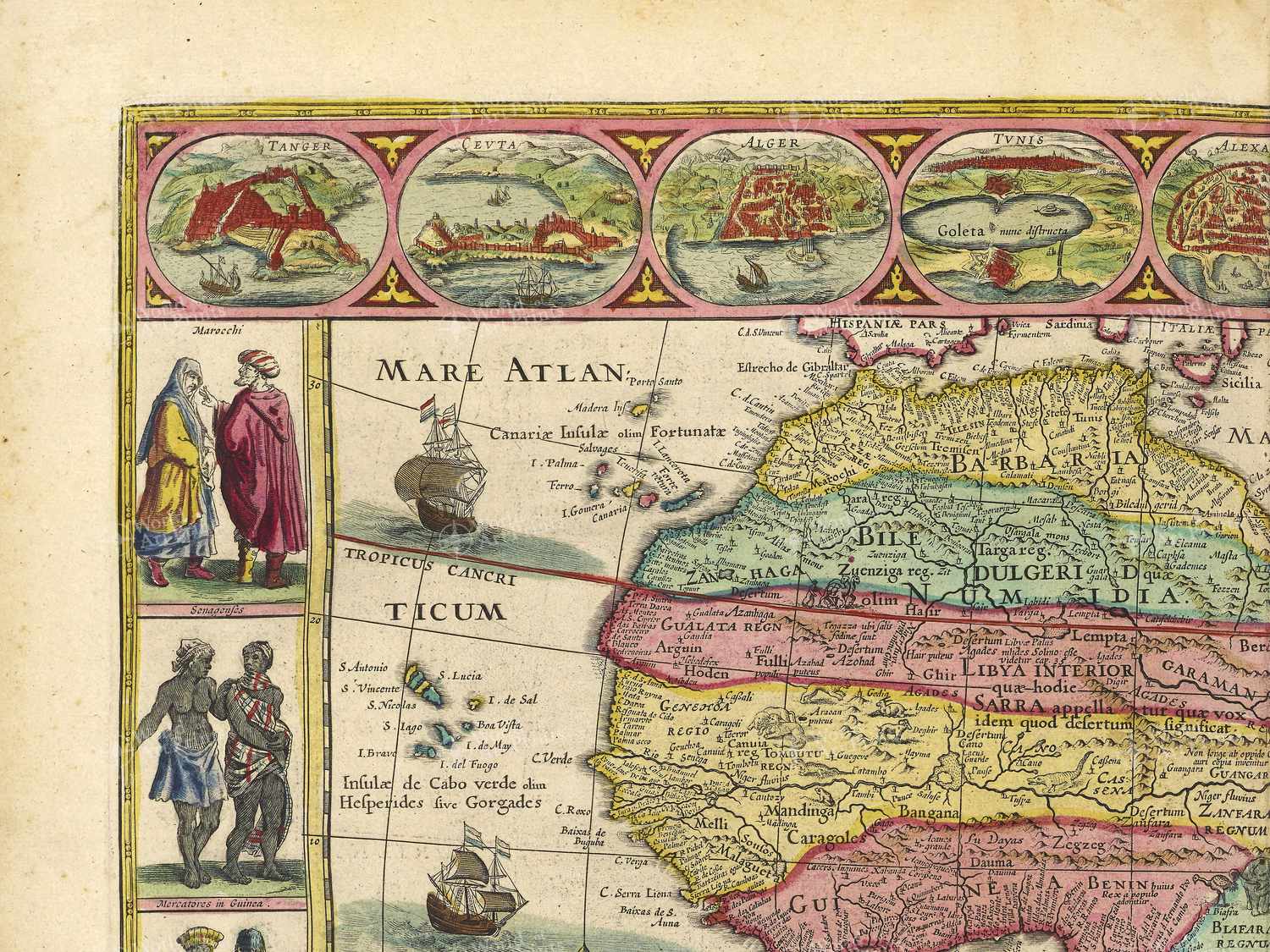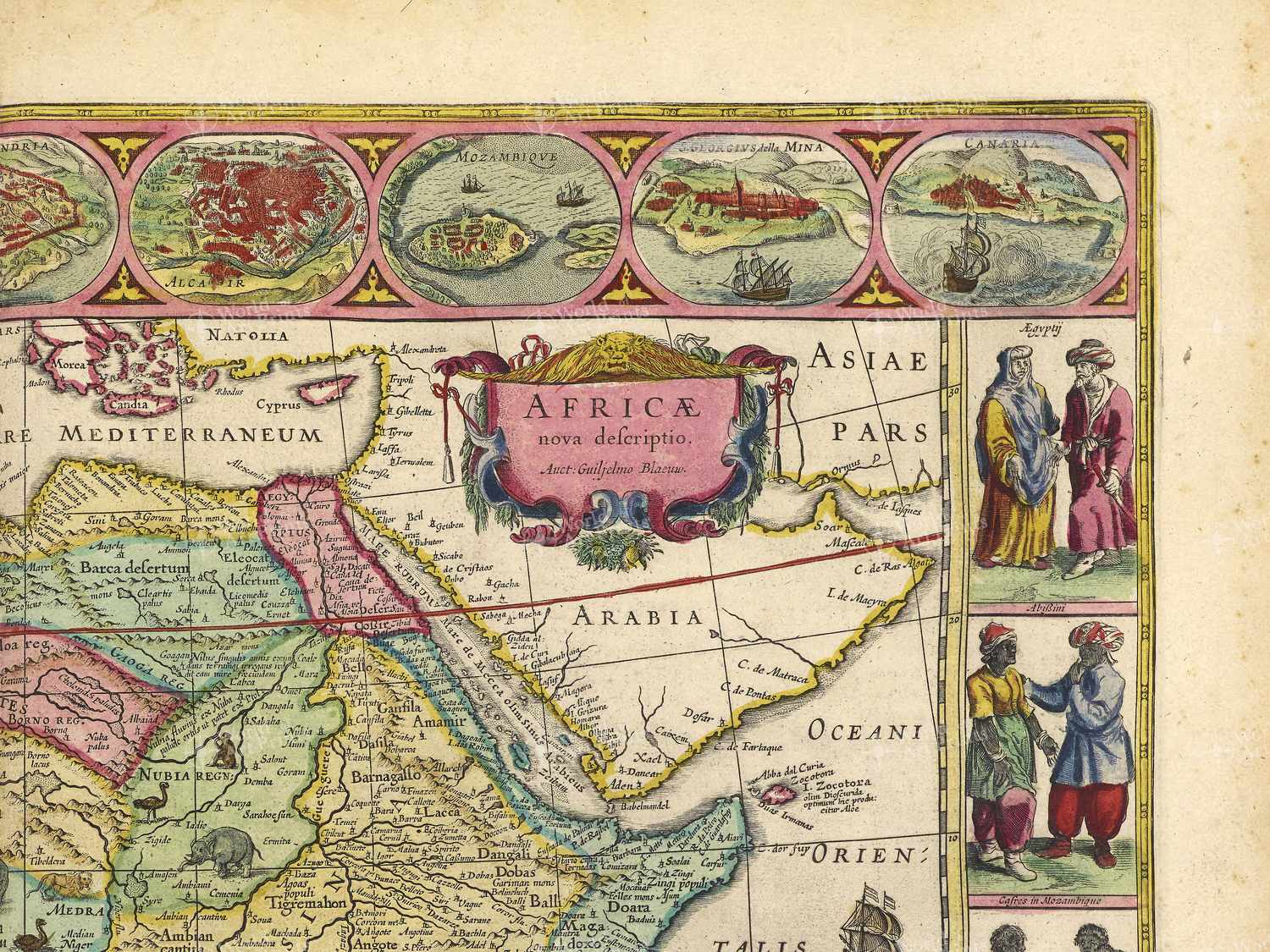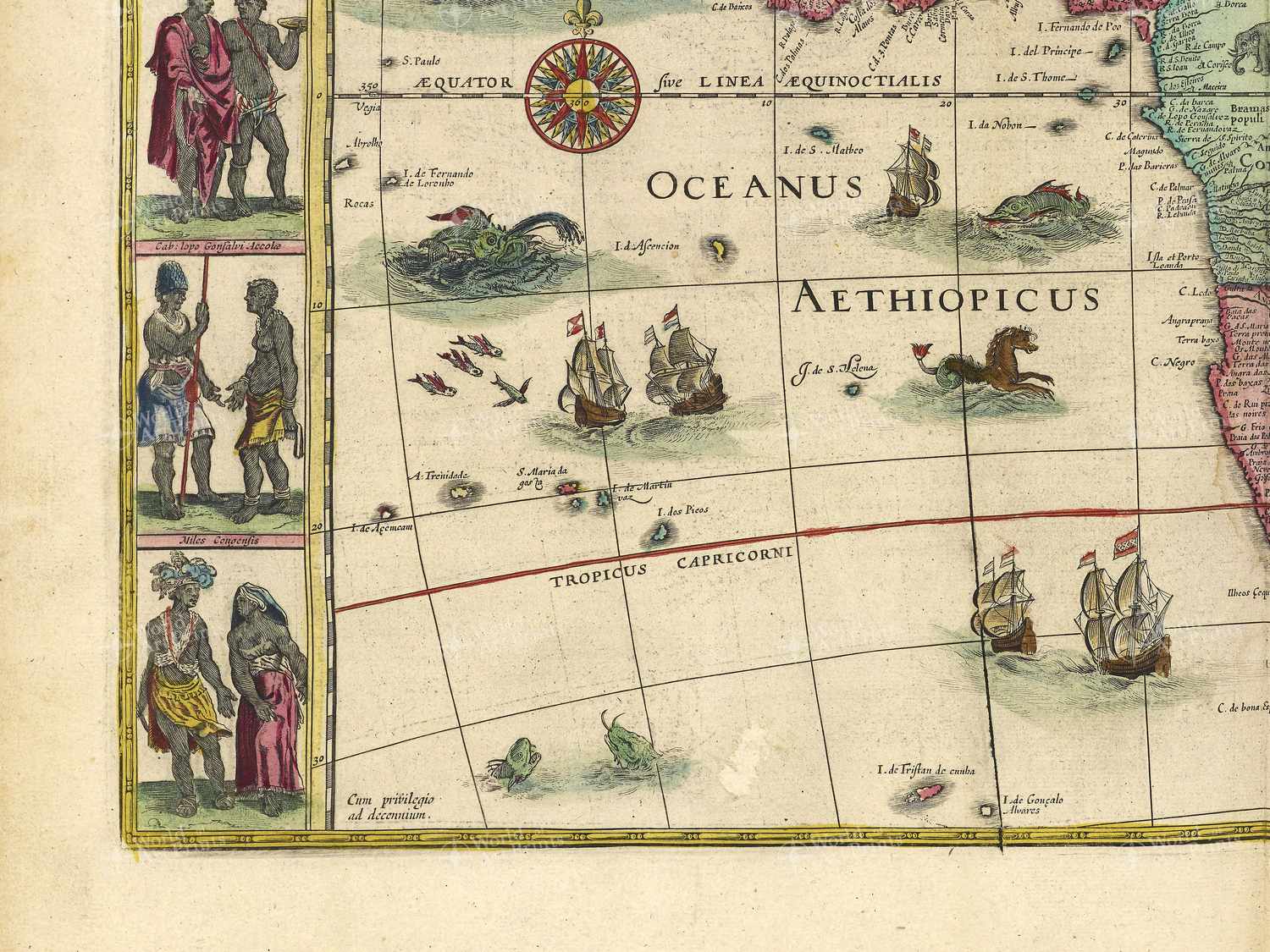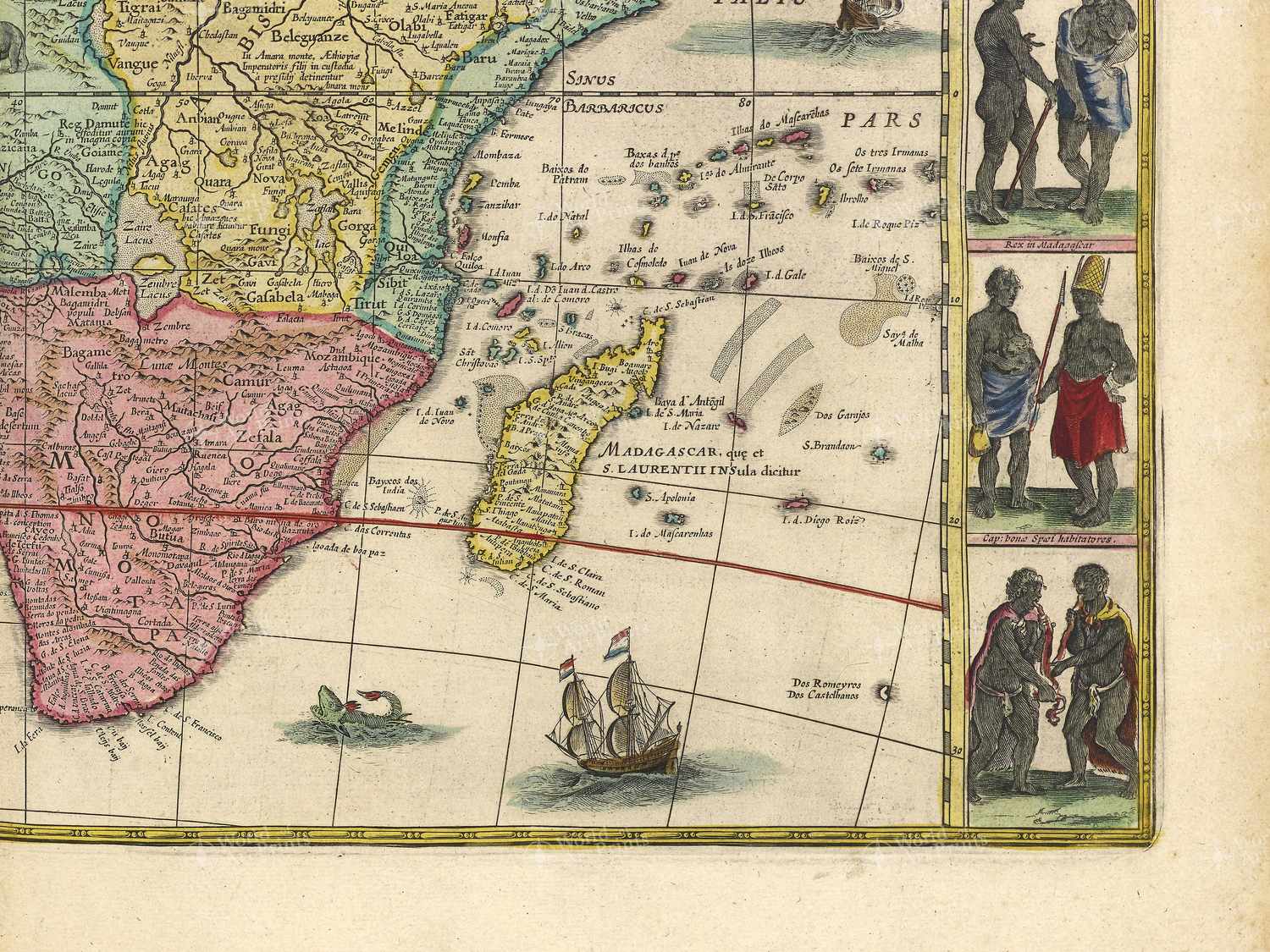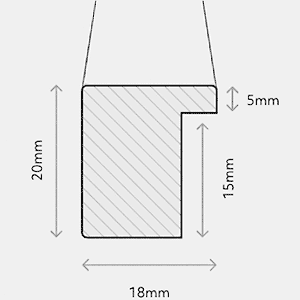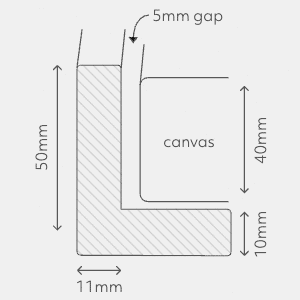This antique map, titled ‘Africae nova descriptio’ and created in 1665, depicts the African continent with intricate detail and artistic flair. ‘Africae nova descriptio’ translates to ‘New Description of Africa’ and reflects the European perspective on the continent during the early modern period.
In the early 17th century, Nigeria was a diverse and complex region with various ethnic groups and kingdoms. The Hausa, Yoruba, and Igbo were some of the prominent ethnic groups, and there were also numerous smaller groups. The region was known for its trade in gold, ivory, and slaves, which attracted European traders and led to the establishment of coastal trading posts.
The map shows Nigeria as part of a larger African continent with South Africa to the south and Congo (Kinshasa) and Congo (Brazzaville) to the west. Nairobi, Lagos, and Kinshasa are located centrally on the map, but specific details of Nigeria’s geography and political

